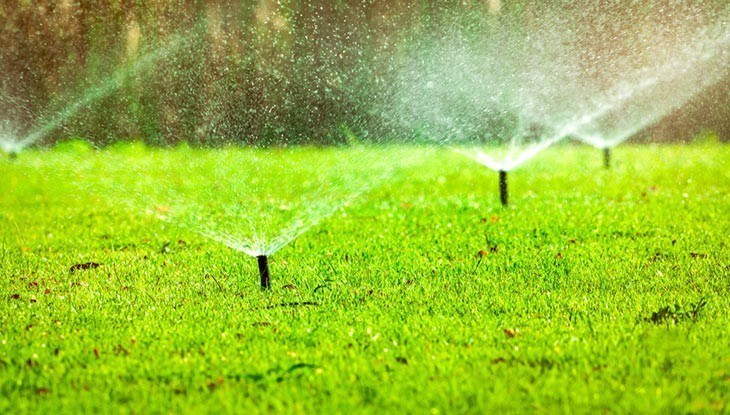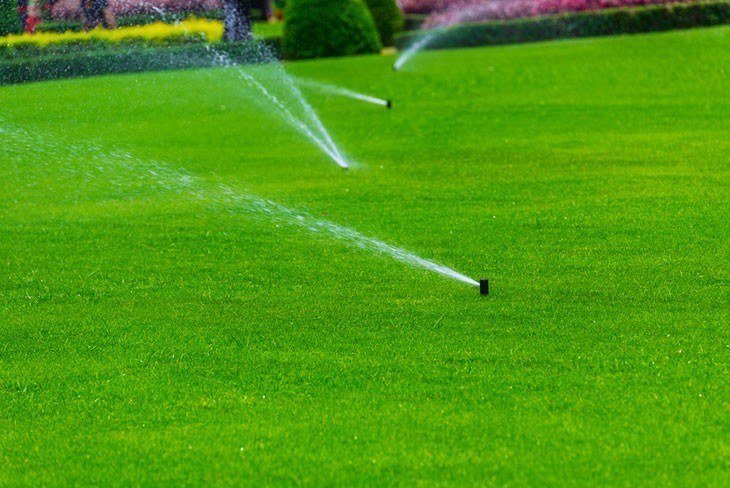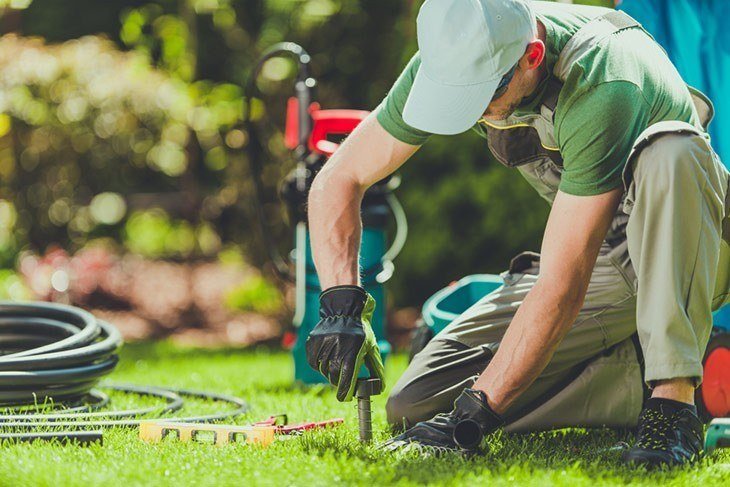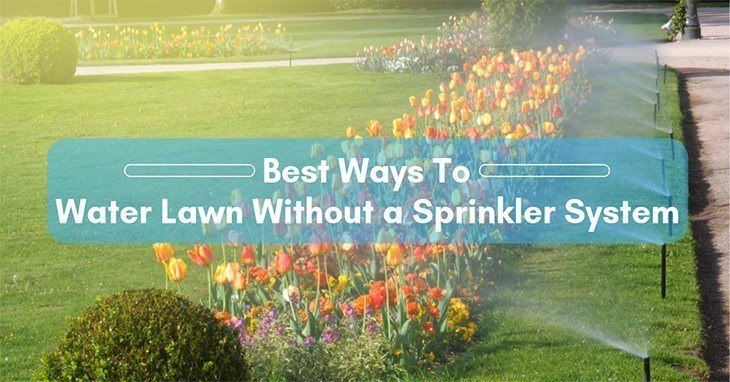Water is essential to the quality of a lawn. If you want your lawn lush green, you must ensure you give it early and deep watering as needed. A sprinkler system does a great job, but it is often expensive. But, is it possible to water lawn without a sprinkler system and still achieve the best out of it? Of course, you can!
You are about to mast a few tips on how and when to water your lawn so that it receives an adequate amount of moisture for a healthy grown. You will also learn the best way to water your yard without a sprinkler system.
Before I delve further into this topic, there are a few things you need to learn about watering your lawn. For instance, you should know the best time to give the grass water. It is also crucial to understand the average amount of water variety of grass in your lawn needs to grow optimally.
More...
What Is The Best Time To Water Lawn?
An overwhelming majority of homeowners prefer watering their grass early in the morning. It is the most convenient time. A few others do it late in the evening when they are back from work. According to experts, watering plants early in the morning allows the plants to make good use of the moisture.
Air temperatures are lowest in the mornings and evenings. Unlike late evenings, there is not much wind blowing. The cooler temperature and lack of blowing gale ensure the water droplets stay on the leaves and soak the soil more adequately.
In the evenings, droplets of water tend to cling to grass blades well into the night. This can result in serious lawn diseases. With water droplets on leaves at night, fungi get the optimal conditions necessary for their multiplication. Thus watering late evening could be a death sentence to your lawn. It is best water your yard between early in the morning, preferably between 4.am and 10.am.
So, what can you do if your work schedule does not allow you to water your grass in the am? Well, rather than putting your lawn at risk of infection and disease, you can wait until the weekend to do it.
How will this affect your grass? An expert recommendation is to saturate your soil with eight to twelve inches of water. To provide a square foot of lawn with one inch of water, you will need little over half a gallon (precisely 0.623 gallons).
Keep in mind that specific condition such as extreme hotness and strong winds can increase the water requirement of your lawn. To check if your lawn receives an adequate amount of water, push a screwdriver or anything that can act as a probe into the soil. The probe will penetrate with easy if the soil is well moist. If you encounter resistance, your lawn most likely needs more water.
Watering Lawn without a Sprinkler
An automated underground lawn sprinkler head would do a great job. But even the cheapest model can be too expensive for most average homeowners. So, you must think outside the box to provide your grass with an adequate amount of water without using too much water or depriving your lawn of enough moisture. Here are a few cool options you can consider:
Using a Garden Hose
A garden hose has many uses. If you cannot afford a sprinkler system, you can just use a garden hose featuring a nozzle at its end. What you have to do is stand on one side with the nozzle pointed towards the part of the lawn you wish to water.
The process may be slow and tiring if you have a large lawn. A smart way is to divide your yard into manageable sections. For example, you can mentally divide your yard into 4-7 parts. This way, you can water a single segment each day.
Thus you can spend your watering time in a single section giving it a proper soak before heading to the next part. If seven sections, you will need a week to go through the entire cycle. Once you are done with the last section, return to your beginning point.

Using a Garden Hose
A good recommendation is to go with a few but large size sections. It will help you determine how long your lawn can thrive without water. Once you establish the water need, you can then adjust accordingly by increasing the number of sections but with diminished sizes.
Another determinant of the number of sections is the prevailing weather conditions. In summer and other hot months, you might want to have fewer sections for more frequent watering than autumn, spring and winter months.
When using a garden hose, make sure you direct the water as close to the ground as possible. The aim is to ensure no much water carried away by wind and evaporation. If you choose to go with the hose method, then you must ensure you buy the best garden hose that efficient, easy to use and water saving.
Install an Irrigation System

Install an irrigation system
An irrigation system is an excellent alternative to an automatic underground sprinkler system. The system operates via a series of small tubes placed strategically on the lawn area. A sprinkler system will throw tiny droplets of water into the air. Such droplets will be lost to wind or evaporated before it can seep into the soil for the benefit of grass.
On the contrary, an irrigation system’s tiny tubes deliver water directly to the soil. The problem is that such systems can be costly, sometimes even more expensive than specific automatic underground sprinkler systems. The irrigation system may be slow and time-consuming. However, it could be the easiest and most efficient way to water lawn without a sprinkler system.
With irrigation systems, the amount of water you will need depends on the soil type. Such systems come with a valve that allows you to regulate water flow. It is a good idea to let the system run through the night as daytime watering will lead to water loss through evaporation.
Consider DIY Sprinkler Systems

DIY Sprinkler Systems
This requires just a little bit of ingenuity. A decent tutorial on making a DIY sprinkler system is beyond the scope of this article. However, I can assure you that the process is simple and straightforward. You can actually use locally available items and still get a convenient, practical and dependable sprinkler.
The items you will need are a garden hose with valve, a sprinkler timer (often sold separately) and all metal impulse sprinklers. The timer will help you program your DIY system to work much like the expensive automatic sprinklers or traveling sprinkler. Online resources are available to guide you through the setup process.
Try the Hover Wand System
A hover wand system attaches to your garden hose and runs in parallel fashion to the ground. The arm that dissipates water features a long tube with tiny holes drilled into it. The pressure that comes from your hose will force the water downwards in a jetting fashion. There is a handle extending towards the soil similar to a hockey stick.
The handle lets you stand upright while the system is dissipating the water to 10 to 12 inches above the ground. The force with which the water dispenses helps to force it into the ground faster and more thoroughly then both drip and sprinkler systems.
Other Helpful Tips
Some practices will improve the efficiency of watering and enhance the health of your lawn even if you do not install a sprinkler system. Scheduling and controlling water distribution for your yard can be difficult. So, it will be vital to ensure your grass is well prepared to receive its water supply.
You achieve this by mowing your grass to just about 2” tall. This height is optimal because it leaves behind young grass that is aggressive and roaring to go. The grass clippings, if not collected, will act as organic mulches. This will lead to the increased ability of the soil to retain water.
The clippings block heat from reaching the soil and reducing evaporation. Therefore, your lawn will remain moist for long leaving you with only a small part to play. This will make your work easier even if you have to do it manually with a garden hose.
Another important tip is to know the characteristics of your lawn. What is the predominant grass type in your lawn? The kind of grass will determine the type of care it needs. Some grass types require too much water. Garden hose method, in that case, may not supply enough water to keep them healthy. The size of your lawn also matters. It may be impractical to sprinkle water on the two-acre grass manually. Talk to lawn experts. They will show you how to make the most out of your grass.
Final Verdict: Best Ways to Water Lawn without a Sprinkler System
According to my knowledge, those are the best ways to water loss without a sprinkler. The most important thing is that you give your grass optimal conditions to grow lush green and healthy.
Manual watering using garden hose is perhaps the cheapest but may not be the easiest thing to do. An irrigation system may be expensive initially. Once you install it successfully, the system will require very little in terms of maintenance.
Hover wand system is also great. DIY sprinkler systems are highly affordable, but they need some creativity. Whichever you choose, ensure your lawn receives optimal water at all times.

